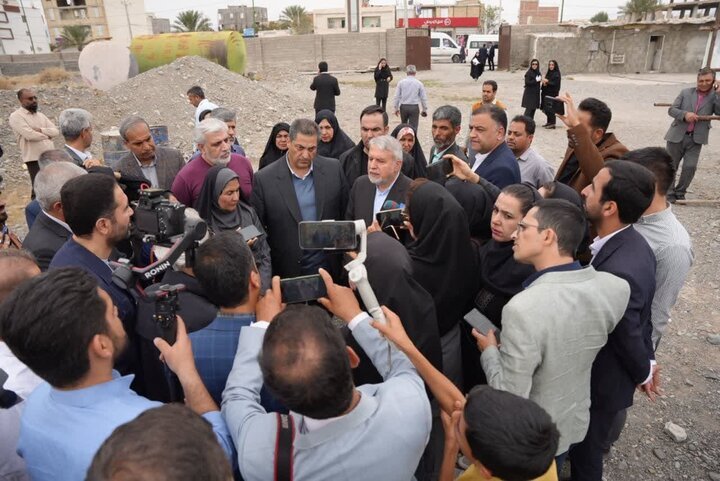Jiroft is not just a city but a symbol of identity, history, and civilization: tourism minister

TEHRAN - Iran’s Minister of Cultural Heritage, Tourism, and Handicrafts, Seyyed Reza Salehi-Amiri, has emphasized the global significance of Jiroft’s ancient civilization and called for greater efforts to showcase its historical and cultural value to the world.
On Thursday, during his visit to the region, which hosts some of Iran’s most important Bronze Age archaeological sites, Salehi-Amiri underscored the necessity of preserving and promoting Jiroft as a key center of early human civilization.
Speaking at an administrative council meeting in Jiroft, Salehi-Amiri highlighted the deep historical roots of the region, noting that Jiroft is not just a city but a symbol of identity, history, and civilization. “If other nations possessed such a civilization, they would build their national economy around it. Unfortunately, we have yet to fully present Jiroft’s civilizational value to the world,” he remarked.
The minister also stressed the importance of the Konar Sandal archaeological site, describing it as more than just an excavation area but rather a cornerstone of Iran’s cultural identity. “Konar Sandal is not merely a collection of bricks and soil; it represents Iran’s honor and historical prestige. This site is one of the pivotal locations in human history and requires comprehensive planning for its preservation and promotion,” he stated.
International conference on Jiroft civilization in 2025
One of the key initiatives highlighted by Salehi-Amiri was the organization of the International Conference on Jiroft Civilization in 2025. He described the event as a crucial step toward scientific and global recognition of Jiroft’s historical importance.
“Many archaeologists, both domestic and international, believe that this region could be the origin of human settlement. If this hypothesis is proven, it will challenge existing theories that place Mesopotamia as the cradle of civilization, potentially sparking a revolution in the field of archaeology,” Salehi-Amiri stated.
He called upon local and national authorities, scholars, and community leaders to collaborate in ensuring the success of this landmark event, which will be overseen by the Research Institute of Cultural Heritage and Tourism.
Efforts to repatriate Jiroft’s stolen artifacts
Addressing the issue of Jiroft’s looted artifacts, Salehi-Amiri acknowledged that many invaluable objects from the region are currently scattered across major museums worldwide. “We are actively pursuing the repatriation of these artifacts through legal channels and international organizations such as UNESCO,” he asserted.
The minister emphasized the urgent need for a dedicated museum in Jiroft to properly house and exhibit the region’s archaeological discoveries. “A museum serves as the identity card of any civilization. Until a proper museum is fully established, we must utilize existing facilities to showcase these priceless artifacts,” he added.
Tourism as a key driver for Jiroft’s development
Salehi-Amiri also pointed to the immense potential of tourism in Jiroft, advocating for its development as a major economic driver for the region. “Jiroft’s tourism potential extends beyond archaeology and history. It boasts unique opportunities in agricultural tourism, ecotourism, culinary tourism, and cultural tourism. We have identified 20 different tourism sectors in Iran, and Jiroft holds exceptional capacity in many of them,” he noted.

Comparing Iran’s tourism industry with (some) neighboring countries, he remarked, “Some countries with far fewer historical and cultural treasures attract 61 million tourists annually, generating $80 billion in revenue. Jiroft, with its rich heritage and natural beauty, deserves a significant share of Iran’s tourism industry.”
Further archaeological research and discoveries
The minister also underscored the importance of continued archaeological excavations in the Jiroft region. “So far, we have uncovered less than 10% of Jiroft’s hidden treasures. More research and excavations are essential to fully understand the depth of this civilization,” he emphasized.
He highlighted recent findings that have already expanded scholars’ understanding of ancient Iran, expressing optimism that future discoveries will further cement Jiroft’s place in world history. “We envision a time when the museums of Iran will be filled with newly unearthed artifacts from Jiroft, showcasing its grandeur,” he stated.
AM
Leave a Comment